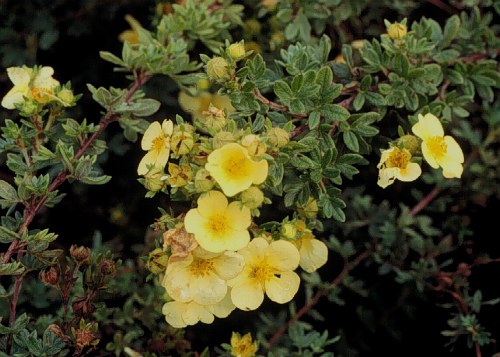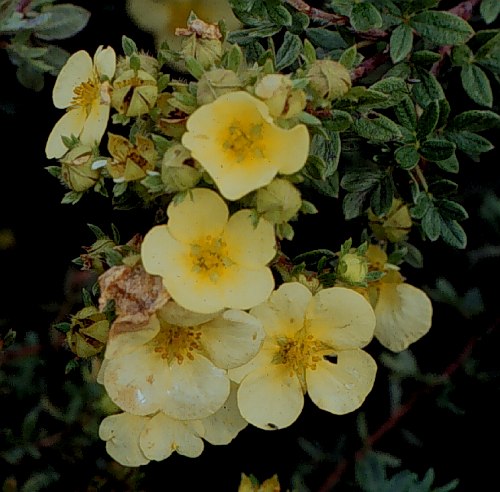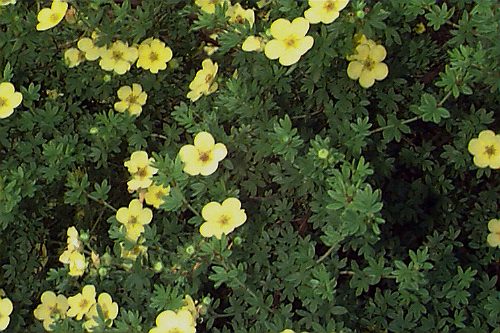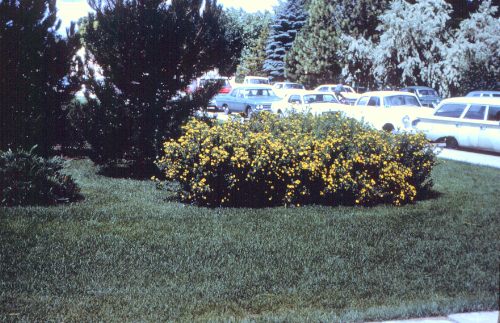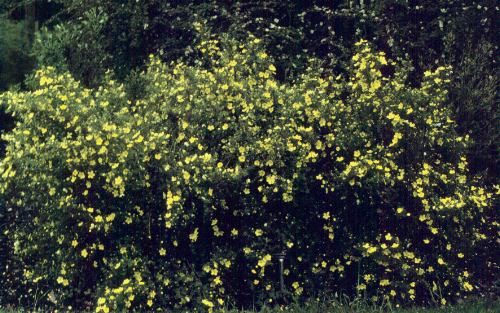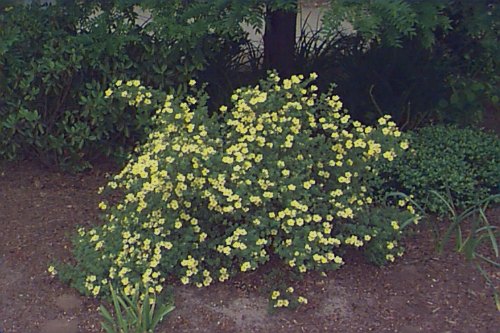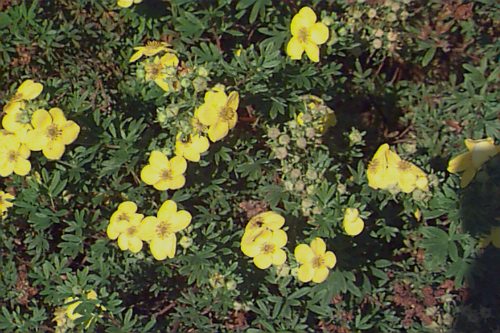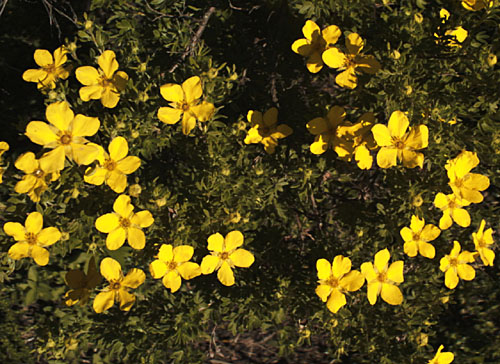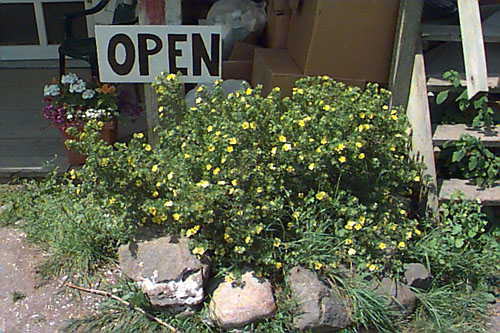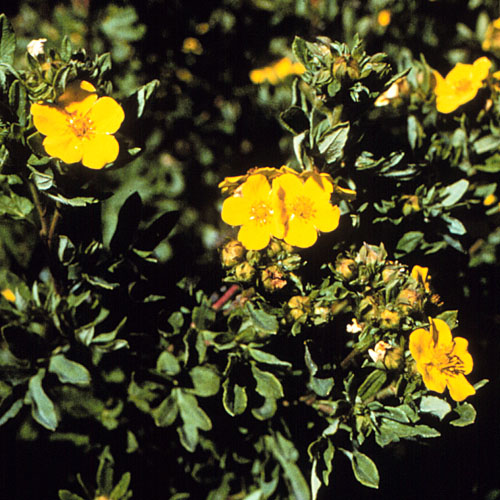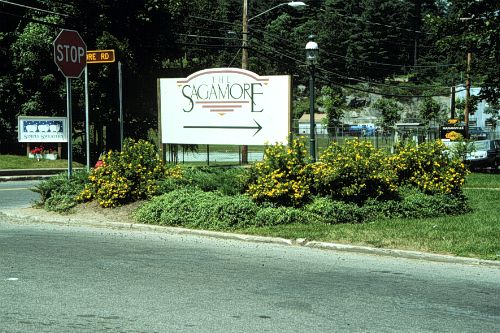Potentilla fruticosa
Bush Cinquefoil
Rosaceae
ExpandHabitat
- native to the Northern Hemisphere
- hardy to zone 2; does not perform well in warmer climates (zone 7 and higher)
Habit and Form
- a small, deciduous shrub
- dense shrub with numerous upright branches
- rounded habit
- 1' to 4' tall with an equal or greater spread
- fine texture
- slow growth rate
Summer Foliage
- alternate leaf arrangement
- compound, pinnate leaves
- leaflets are elliptic and linear
- 3 to 7 leaflets per leaf
- medium blue-green to dark green leaf color
- plant leafs out in early Spring
- leaves are about 1" long
Autumn Foliage
- fall color is yellow-brown
- not ornamentally important
Flowers
- yellow, buttercup flowers
- blooms from June until the first frost
- about 1" to 1.5" in diameter
Fruit
- dry, brown achene
- not showy
- persist through winter
Bark
- not ornamentally important
- peeling bark
Culture
- easy to grow
- easily transplanted
- soil adaptable
- does well in extremely cold temperatures
- full sun is best
- to keep dense round habit, remove canes during winter or cut to ground
Landscape Use
- shrub borders
- foundation plant
- facer plant
- for flowers
- mass plantings
Liabilities
- somewhat difficult plant to keep looking tidy
- few pest problems
- spider mites
- does not like warm night temperatures
ID Features
- alternate leaf arrangement
- pinnately compound leaves with 3 to 7 leaflets
- yellow buttercup flowers June until frost
- persistent achene
Propagation
- by cuttings
- by seed
- by tissue culture
Cultivars/Varieties
Literally dozens of cultivars have been selected, mostly for variations in flower color. Presented below are abbreviated descriptions of a representative sampling of the most common forms.
'Abbotswood' - Considered one of the best, this low 3' form is disease-free and bears white blooms over a long period. 'Abbotswood Silver' is similar, but bears leaves variegated with white margins. 'McKay's White' is an alternative with creamy-white blooms that only grows 2.5" tall.
'Absaraka' (Dakota Goldrush®) and 'Fargo' (Dakota Sunspot®) - These two selections come out of North Dakota and feature larger yellow flowers that are produced over a long period on dwarf, compact rounded 3' plants.
'Coronation Triumph' - This 4' mounded form begins blooming early in the season and continues for a very long period with yellow blooms.
'Gold Drop' (also known as 'Farreri') - A classic cultivar that is still considered one of the best, this rounded 3' plant bears profuse yellow blooms all season.
'Goldfinger' - Common in the trade, this 3' mound bears large 1.5" yellow blooms over an extended period.
'Jackmannii' - A larger rounded selection, this classic form displays large deep yellow flowers all summer.
'Katherine Dykes' - An old selection, this form has a 2'-3' spreading-arching habit studded with light yellow blooms all summer.
'Longacre' and 'Yellow Gem' - Useful for their low, spreading groundcover habits, these two selections bear yellow blooms all season. 'Yellow Gem' has the added bonus of reddish young twigs and gray-green foliage.
'Pink Beauty' - A breakthough in this species, this plant bears clear pink blooms on a 2' rounded plant. In climates with warm summer nights, the flower color may not hold as well. 'Pink Pearl' and 'Pink Whisper' are two other pink-flowered forms, though the blooms may fade to yellow in warm climates.
'Primrose Beauty' - Producing light yellow blooms from late spring to frost, this 3' spreading plant is also notable for its silvery-gray foliage.
'Snowbird' - One of the few double-flowered cultivars available, this 3' upright form also has good lustrous foliage. The white double blooms may not show extra petals until the plant is established.
'Sunset' - Depending on exposure and climate, this newer 16" tall spreading form bears yellow blooms suffused with orange-reddish hues.
'Tangerine' - A color breakthough, this selection bears yellow flowers flushed with orange-copper. It is a mounded-spreading plant that grows to 2' tall and wider.
